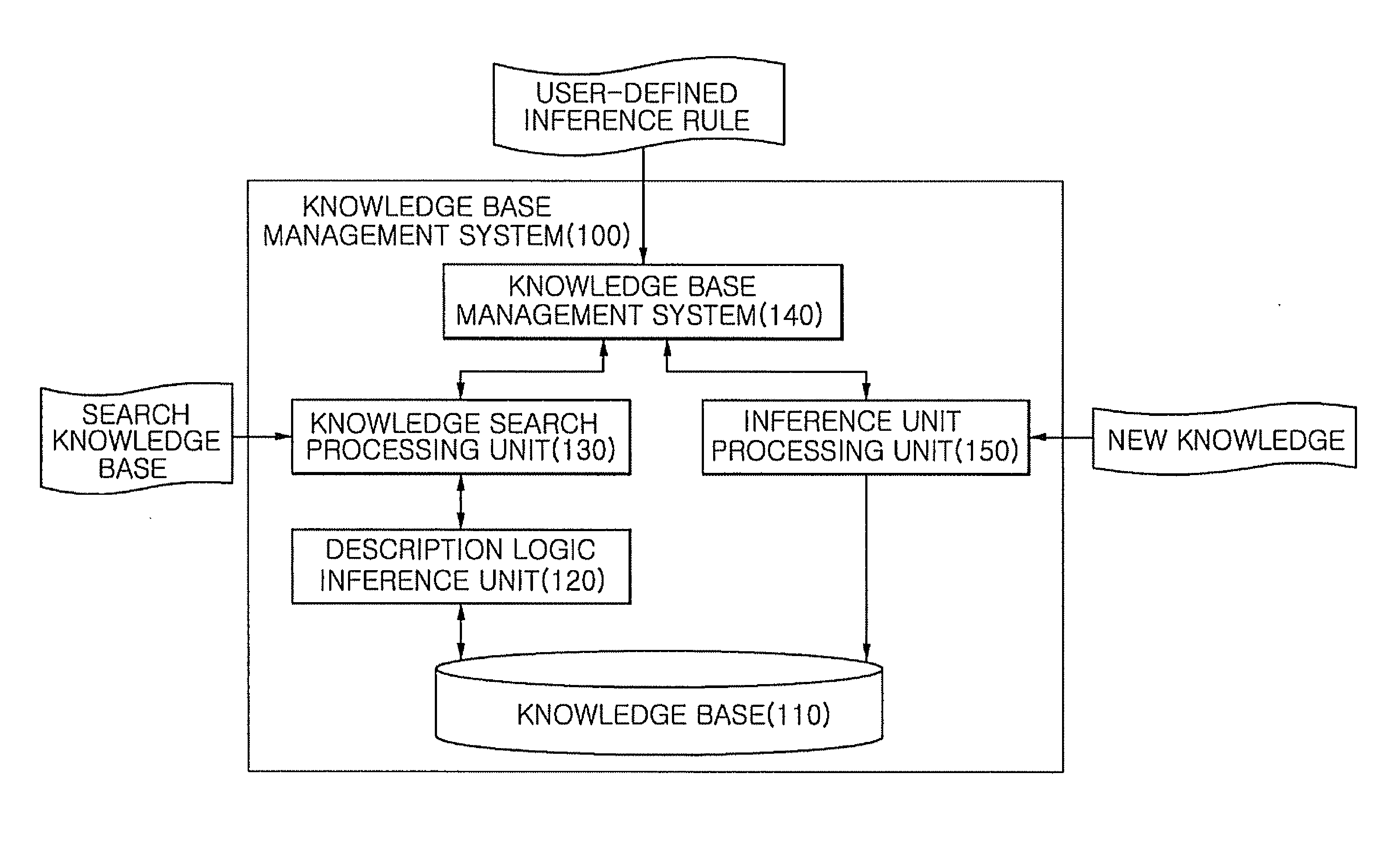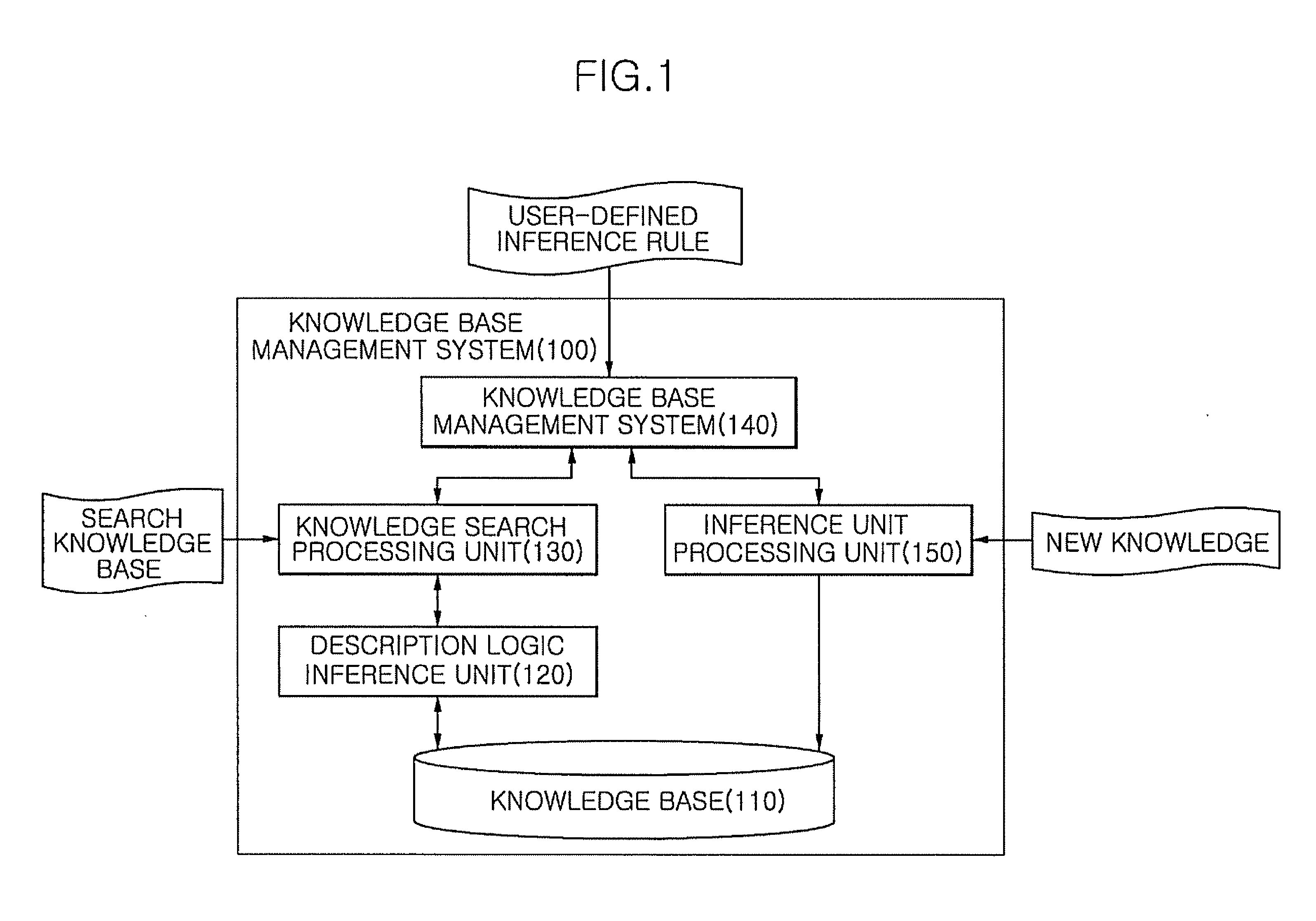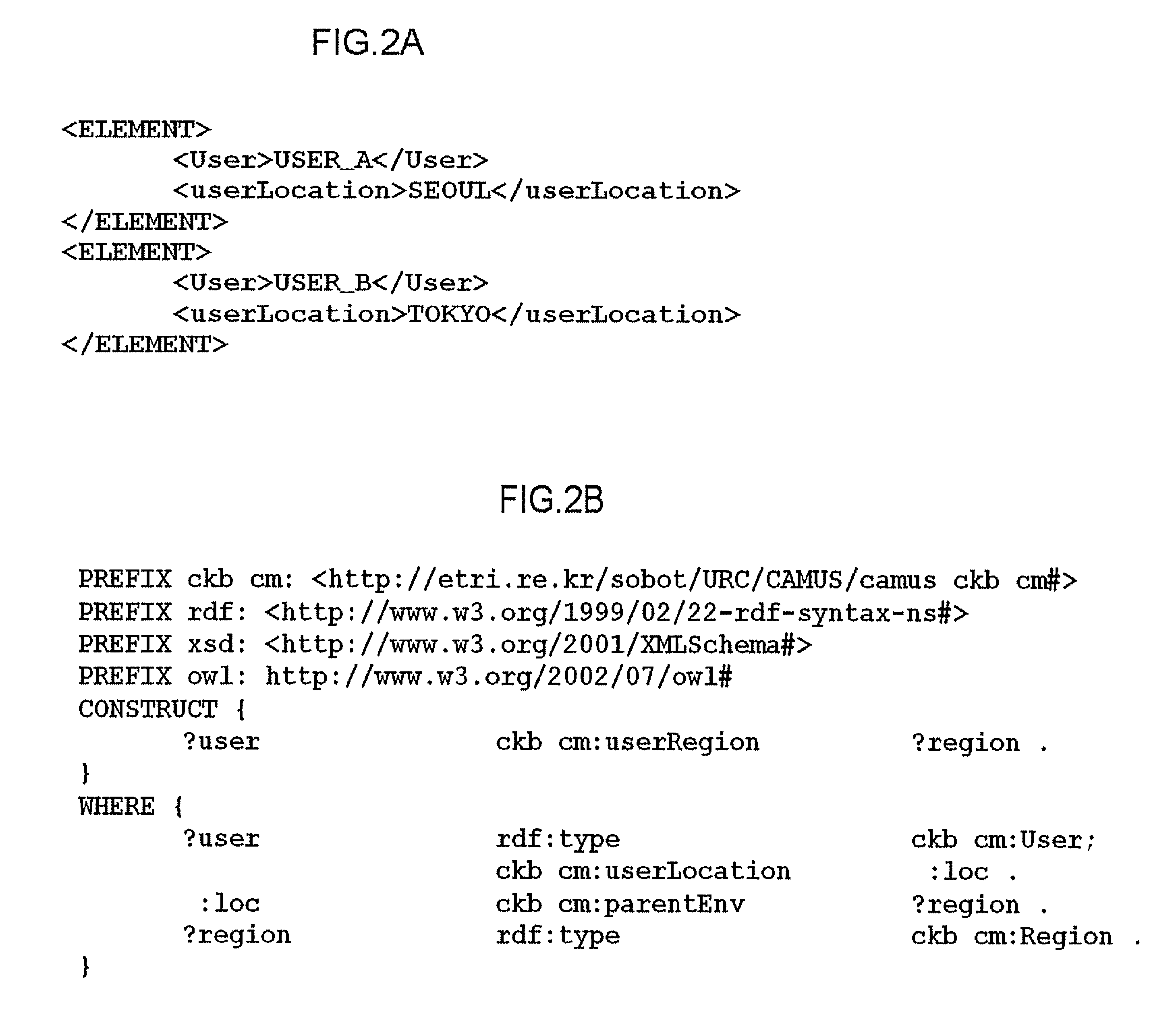Method of applying user-defined inference rule using function of searching knowledge base and knowledge base management system therefor
a knowledge base and user-defined inference technology, applied in the field of user-defined inference rules applying to knowledge base management systems, can solve the problems of unsatisfactory content to be verified, inability to ensure completeness of inference, and inability to satisfy completeness, so as to achieve the effect of efficiently searching knowledge bas
- Summary
- Abstract
- Description
- Claims
- Application Information
AI Technical Summary
Benefits of technology
Problems solved by technology
Method used
Image
Examples
Embodiment Construction
[0032]Hereinafter, an exemplary embodiment of the invention will be described in detail with reference to the accompanying drawings.
[0033]FIG. 1 is a diagram illustrating a structure of a knowledge base management system applying a user-defined inference rule according to an embodiment of the invention and interworking relations between elements.
[0034]A knowledge base management system 100 includes a knowledge base 110, a description logic inference unit 120, a knowledge search processing unit 130, a user-defined inference rule managing unit 140, and a knowledge operation processing unit 150.
[0035]The knowledge base 110 is a place where ontology-based knowledge data is stored, and stores knowledge in a form of RDF having three elements composed of a subject, a property, and an object.
[0036]The description logic inference unit 120 returns a search result to which a logic inference is applied from the knowledge stored in the knowledge base 110, when a query for the knowledge base 110 ...
PUM
 Login to View More
Login to View More Abstract
Description
Claims
Application Information
 Login to View More
Login to View More - R&D
- Intellectual Property
- Life Sciences
- Materials
- Tech Scout
- Unparalleled Data Quality
- Higher Quality Content
- 60% Fewer Hallucinations
Browse by: Latest US Patents, China's latest patents, Technical Efficacy Thesaurus, Application Domain, Technology Topic, Popular Technical Reports.
© 2025 PatSnap. All rights reserved.Legal|Privacy policy|Modern Slavery Act Transparency Statement|Sitemap|About US| Contact US: help@patsnap.com



